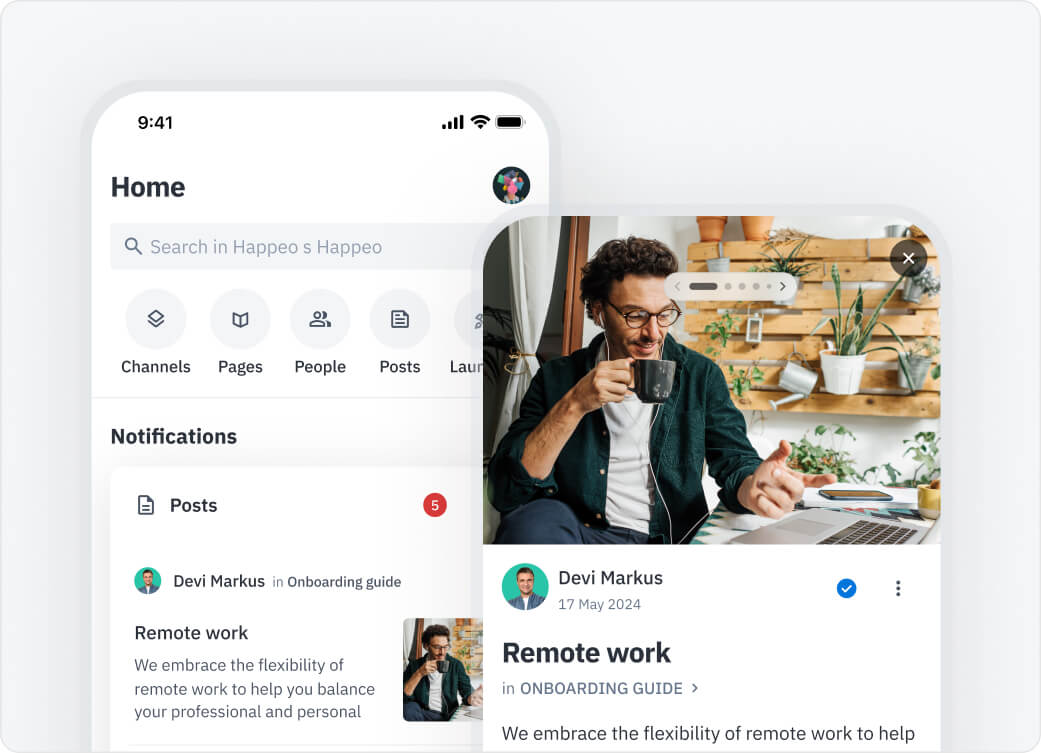
Employee engagement Expert insights
How Internal crowdsourcing boosts innovation among employees

4 mins read
Start building your digital home with Happeo
Request a demoEmployee engagement Expert insights
Product
Features
Solutions
Happeo for
Use cases
Resources
Explore
Support
Happeo For
Use cases
Comparisons
Explore
Support
Recent

Jonathan Davies
4 mins read
Internal crowdsourcing is a valuable tool for engaging employees with the company vision and drawing on their valuable knowledge. It can open up access to a vast pool of untapped potential and demonstrate to people that their opinions matter.
What's more, it can help businesses leverage the social-collaborative mindset of millennial talent to drive innovation. There are countless articles proclaiming that employees are the most valuable asset in any business, and it’s difficult to find a set of company values that doesn’t include this message in some form. But are enterprises really making the best use of the value their people have to offer? Are they taking advantage of their precious knowledge and fresh perspectives on troublesome problems, and harnessing the hive mind to drive competitiveness and innovation?
Crowdsourcing – reaching out to the wider world, usually via the internet, to help you solve challenges – has been a popular model for some years. There are several examples of how the crowd has been enlisted as an innovation partner in a variety of different fields, and the approach has been used by some of the world’s biggest brands to speed up product development. Technology companies can learn a great deal from the application of crowdsourcing in the B2C arena, and can use simple processes to gather ideas and engage customers.
PWC’s 2011 report, Harnessing the Power of Crowdsourcing, highlights that CEOs see innovation as the best route to growth. Of the CEOs surveyed, 79% expected their innovation developments to drive efficiencies and create competitive advantages, and 78% expected innovation to generate significant new sources of revenue. Despite this, businesses often find it difficult to effectively harness the creativity, ideas, and talent of the people who work for them.
Internal crowdsourcing can be a highly effective vehicle for innovating solutions as it allows businesses to cast the net wide and gather input from a variety of sources. Fresh perspectives on problems provide new insights that those close to the issue may be blind to. The PWC report mentioned above also discusses how crowdsourcing helps to improve employee engagement by giving people a voice and making them feel like they have an active role in driving the business forward.
Job-hopping, particularly among Millenials, presents a challenge in terms of retaining top talent. In the US, over the last 20 years the number of companies people worked for in the five years after graduation has nearly doubled. Businesses invest a huge amount of time and resources in hiring the best talent, but may not have a setup that allows this talent to flourish in the way it wants to. Millennials in particular place advancement and development above financial remuneration in their list of priorities.
Having once been a fresh graduate working in a big organization, I’ve experienced the apprehension and fear that comes with challenging the established way of doing things. You’re often told to “speak up if something we do does not make sense to you”, but that’s easier said than done. What if there’s no channel for voicing your opinion and challenging the status quo?
You can crowdsource internally by providing an effective platform for sharing stories in order to stop valuable knowledge slipping between the cracks. Technologies such as enterprise social networks (ESNs), where employees can voice opinions, connect with colleagues, and give feedback on company-wide initiatives, can also help break down silos and bring dispersed teams closer together.
These types of solutions boost collaboration and lower the barrier to sharing ideas. They also help shift the communications flow away from the classic one-way, top-down model towards a more inclusive setup that includes bottom-up communication. This helps employees feel more involved and appreciated, and encourages them to give up more of themselves for the common cause.
At the end of the day, for crowdsourcing to succeed businesses have to be able to achieve a degree of cultural transformation. The aim should be to foster an inclusive culture where employees are encouraged to connect across geographical and organizational boundaries and share knowledge and ideas. In this regard, ESN technologies are excellent tools for taking the ‘corporate stiffness’ out of communicating and bringing the two most valuable assets in any business – people and information – closer together.
